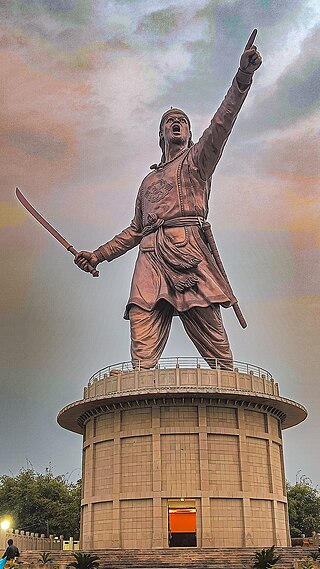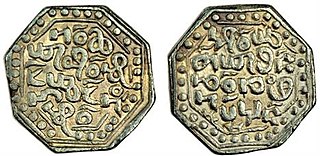
Bihu is of three types and it is an important cultural festival unique to the Indian state of Assam – 'Rongali' or 'Bohag Bihu' observed in April, 'Kongali' or 'Kati Bihu' observed in October or November, and 'Bhogali' or 'Magh Bihu' observed in January. The festivals present an admixture of Tibeto-Barman, Austroasiatic and Indo-Aryan traditions entwined so intricately that it is impossible to separate them—festivals which are uniquely Assamese to which all communities of Assam had contributed elements. The Rongali Bihu is the most important of the three, celebrating spring festival. The Bhogali Bihu or the Magh Bihu is a harvest festival, with community feasts. The Kongali Bihu or the Kati Bihu is the sombre, thrifty one reflecting a season of short supplies and is an animistic festival.

Buranjis are a class of historical chronicles and manuscripts associated with the Ahom kingdom. There were written initially in the Ahom Language and later in the Assamese language as well. The Buranjis are an example of historical literature which is rare in India—they bear resemblance to Southeast Asian traditions of historical literature instead. The Buranjis are generally found in manuscript form, a number of these manuscripts have been compiled and published especially in the Assamese language.

Lachit Borphukan son of Momai Tamuli Borbarua was an Ahom Borphukan, primarily known for commanding the Ahom Army and the victory in the Battle of Saraighat (1671) that thwarted an invasion by the vastly superior Mughal Forces under the command of Ramsingh I. He died about a year later in April 1672.

Dibrugarh district (Pron:ˌdɪbru:ˈgor:) is a district in the state of Assam in India. The district headquarters are located within the city of Dibrugarh.

Golaghat district (Pron:ˌgəʊləˈgɑ:t) is an administrative district in the state of Assam in India. It attained district status in 1987. The district headquarters are located at Golaghat. The district occupies an area of3,502 km2 (1,352 sq mi) and lies 100 metres (330 ft) above sea level.

The Ahom kingdom was a late medieval kingdom in the Brahmaputra Valley that retained its independence for nearly 600 years despite encountering Mughal expansion in Northeast India. Established by Sukaphaa, a Tai prince from Mong Mao, it began as a mong in the upper reaches of the Brahmaputra based on wet rice agriculture. It expanded suddenly under Suhungmung in the 16th century and became multi-ethnic in character, casting a profound effect on the political and social life of the entire Brahmaputra valley. The kingdom became weaker with the rise of the Moamoria rebellion, and subsequently fell to repeated Burmese invasions of Assam. With the defeat of the Burmese after the First Anglo-Burmese War and the Treaty of Yandabo in 1826, control of the kingdom passed into East India Company hands.

Bodo–Kacharis is a name used by anthropologist and linguists to define a collection of ethnic groups living predominantly in the Northeast Indian states of Assam, Tripura, and Meghalaya. These peoples are speakers of either Bodo–Garo languages or Assamese. Some Tibeto-Burman speakers who live closely in and around the Brahmaputra valley, such as the Mising people and Karbi people, are not considered Bodo–Kachari. Many of these peoples have formed early states in the late Medieval era of Indian history and came under varying degrees of Sanskritisation.

Suklingphaa, or Kamaleswar Singha, was a king of the Ahom kingdom. He came to power when he was a toddler, and died in his teens during a small pox epidemic. The de facto ruler during his reign was Purnanada Burhagohain, who was able to consolidate power after installing him on the throne; and his parents Kadamdighala and Numali also were very powerful. Kamaleswar Singha's reign witnessed the suppression of Moamoria rebellion and restoration of Ahom rule over Upper Assam. The Dundiya Revolution in Kamrup was also suppressed during his reign. In Nagaon, the Ahom army also managed to defeat a coalition of Moamoria rebels and the Kacharis of Kachari Kingdom. Much of this was the handiwork of Purnananda Burhagohain and not Kamaleshwar Singha.

The Chutia Kingdom was a late medieval state that developed around Sadiya in present Assam and adjoining areas in Arunachal Pradesh. It extended over almost the entire region of present districts of Lakhimpur, Dhemaji, Tinsukia, and some parts of Dibrugarh in Assam, as well as the plains and foothills of Arunachal Pradesh. The kingdom fell around the year 1524 to the Ahom Kingdom after a series of conflicts and the capital area ruled by the Chutia rulers became the administrative domain of the office of Sadia Khowa Gohain of the Ahom kingdom.

Sudingphaa also, Chandrakanta Singha, was a Tungkhungia king of the Ahom dynasty, who ruled at the climactic of the Ahom kingdom. His reign witnessed the invasion of Burmese on Assam and its subsequent occupation by British East India Company. He was installed as King twice. His first reign ended when Ruchinath Burhagohain deposed him and installed Purandar Singha in his stead. His second reign ended with his defeat at the hands of the invading Burmese army. He continued his militant efforts to regain his kingdom as well as to keep Purandar Singha at bay. Finally he submitted himself to Burmese who induced him to believe that they will make him king. Instead he was seized and placed in confinement at Rangpur. After the defeat of Burmese in the First Anglo-Burmese War and subsequent peace Treaty of Yandabo on 24 February 1826 CE, Assam passed into the hand of British. Most of the members of Ahom Royal family were granted pensions. Chandrakanta Singha received a pension of 500 rupees. He first lived in Kaliabor and later on at Guwahati. He visited Calcutta in order to request the restoration of his kingdom but in vain. He died in 1839 CE soon after his return to Guwahati.
Hazarika was a Paik officer under the administration of the Ahom kingdom and Koch kingdom. The commander over 1,000 (Hazar) paiks was known as a Hazarika. As it was a purely administrative position, the title holder could belong to diverse ethnic groups and religions.
Saikia was a Paik officer of the Ahom militia who led a hundred paiks. The Koch kingdom had a similar system in place. As it was a purely administrative position, the title holder could belong to diverse ethnic groups or religions. Today, this title is used as a surname by Assamese people of various ethnic origins. The post of Saikia in the Paik system was higher in rank to the Bora but lower in rank to the Hazarika.

Sunyatphaa also Udayaditya Singha was the king of Ahom Kingdom from 1670 CE to 1672 CE. After his elder brother Swargadeo Chakradhwaj Singha died in the middle of Ahom-Mughal war, Udayaditya Singha succeeded to the throne. His reign witnessed the end of Ahom-Mughal war, which started during the reign of Chakradhwaj Singha, when the Mughal army led by Rajput prince, Ram Singh I of Amber, was decisively defeated by the Ahom forces led by Ahom commander Lachit Borphukan in the Battle of Saraighat. The later part of his reign was characterized by the failure of military expedition against the Dafala tribes and the influence of Paramananda Sannyasi, a saintly figure from Brindaban, over Udayaditya Singha. Udayaditya's over exerted devotion towards Paramananda Sanyasi, aroused dissatisfaction among the nobles, which ultimately caused his deposition and execution. His reign was followed by a series of political anarchy and internal disturbances in the Ahom kingdom which continued till the accession of Gadadhar Singha in 1681 CE.

The Chutia people are an ethnic group that are native to Assam and historically associated with the Chutia kingdom. However, after the kingdom was absorbed into the Ahom kingdom in 1523–24, the Chutia population was widely displaced and dispersed in other parts of Upper Assam as well as Central Assam. They constitute one of the core groups that form the Assamese people.
Bora, also spelled Borah or Barah, is an Assamese surname used commonly throughout Assam.

Ahomisation was an assimilation process in the former Ahom kingdom of Assam by which the people from different ethnic groups in the region became a part of what is now considered as the Ahom population.
Kuranganayani was a Manipuri princess who became Queen of the Ahom Kingdom. She was the daughter of Jai Singh, she was married to Rajeswar Singha. She was instrumental in killing Moamoria rebel Raghab Borbarua.
Keertichandra Borbarua was the Prime Minister of Ahom Kingdom during the reign of Lakshmi Singha. He was a controversial person of Assam History. Though he was a capable statesman, burning the fake Buranjis was the controversial incident of his life.

Sonowal is a designation of the gold-washers of Assam. They were previously addressed as Xunia thakur.













